Cyrus The Great Cylinder – Legacy Of The Ancients
A. Sutherland - AncientPages.com - The Cyrus Cylinder, sometimes referred to as the first “bill of human rights,” traces its origins to the Persian king Cyrus the Great’s conquest of Babylon in the sixth century B.C.
Almost 2,600 years later, its remarkable legacy continues to shape contemporary political debates, cultural rhetoric and philosophy.
One of the most celebrated objects in world history, the Cyrus cylinder is a fragmentary clay cylinder with an Akkadian inscription of thirty-five lines discovered in a foundation deposit by A. H. Rassam during his excavations at the site of the Marduk temple in Babylon in 1879.

In this text, a clay cylinder now in the British Museum, Cyrus describes how he conquers the old city. Nabonidus is considered a tyrant with strange religious ideas, which causes the god Marduk to intervene. That Cyrus thought of himself as chosen by a supreme god, is confirmed by Second Isaiah; h is claim that he entered the city without struggle corroborates the same statement in the Chronicle of Nabonidus.
A second fragment, containing lines 36-45, was later identified in the Babylonian collection at Yale University. The total inscription, though incomplete at the end, consists of forty-five lines, the first three almost entirely broken away.
The text contains an account of Cyrus’ conquest of Babylon in 539 B.C.E., beginning with a narrative by the Babylonian god Marduk of the crimes of Nabonidus, the last Chaldean king (lines 4-8).
Then follows an account of Marduk’s search for a righteous king, his appointment of Cyrus to rule all the world, and his causing Babylon to fall without a battle (lines 9-19). Cyrus continues in the first person, giving his titles and genealogy (lines 20-22) and declaring that he has guaranteed the peace of the country (lines 22-26), for which he and his son Cambyses have received the blessing of Marduk (lines 26-30).
He describes his restoration of the cult, which had been neglected during the reign of Nabonidus, and his permission to the exiled peoples to return to their homeland (lines 30-36). Finally, the king records his restoration of the defenses of Babylon (lines 36-43) and reports that in the course of the work he saw an inscription of Aššurbanipal (lines 43-45).
The Cylinder—a football-sized, barrel-shaped clay object covered in Babylonian cuneiform, one of the earliest written languages—announced Cyrus’ victory and his intention to allow freedom of worship to communities displaced by the defeated ruler Nabonidus. At the time, such declarations were not uncommon, but Cyrus’ was unique in its nature and scope.
When contextualized with other contemporary sources, such as the Bible’s Book of Ezra, it becomes evident that Cyrus allowed displaced Jews to return to Jerusalem.
“One of the goals of this exhibition is to encourage us to reflect that relations between Persians and Jews have not always been marked by the discord that disfigures the political map of the Near East today,” said Julian Raby, The Dame Jillian Sackler Director of the Arthur M. Sackler Gallery and the Freer Gallery of Art.
“Cyrus was the very image of a virtuous rule¬—inspiring leaders from Alexander the Great to Thomas Jefferson—so it is apt that the first time it will be seen in the West is in Washington, D.C.”
Under Cyrus (ca. 580–530 B.C.), the Persian Empire became the largest and most diverse the world had known to that point. Subsequent generations of rulers considered it to be the ideal example of unified governance across multiple cultures, languages and vast distances.
Cyrus’ declarations of tolerance, justice and religious freedom provided inspiration for generations of philosophers and policymakers, from Ancient Greece to the Renaissance, and from the Founding Fathers to modern-day Iran, so much so that a copy now resides in the United Nations’ headquarters in New York.
The message of the Cylinder and the larger legacy of Cyrus’ leadership have been appropriated and reinterpreted over millenia, beginning with its creators. The Babylonian scribe who engraved the Cylinder attributed Cyrus’ victory to the Babylonian god Marduk, a stroke of what could be considered royal and religious propaganda.
In the fourth century B.C., the Greek historian Xenophon wrote Cyropaedia, a text that romanticizes the philosophies and education of Cyrus as the ideal ruler, which greatly influenced both Alexander the Great and, much later, Thomas Jefferson in his creation of the Declaration of Independence.
Rediscovered in 1879, the document immediately entered the fray of public debate as invaluable proof of the historical veracity of events described in biblical scripture. In the early 20th century, supporters of the creation of the state of Israel compared the actions of British King George V to those of Cyrus, allowing Jews to return to Jerusalem.
“The Cyrus Cylinder and Ancient Persia” includes related objects that highlight some of the artistic, cultural and historical achievements of the Achaemenid Empire (550–330 B.C.) of Iran, such as architectural fragments, finely carved seals and luxury objects from the Oxus Treasure.
Written by – A. Sutherland AncientPages.com Senior Staff Writer
Copyright © AncientPages.com All rights reserved. This material may not be published, broadcast, rewritten or redistributed in whole or part without the express written permission of AncientPages.com
Expand for referencesMore From Ancient Pages
-
 Mysterious Ancient People Who Mastered Thought-Transmission Through Space And Spoke At Distance
Ancient Mysteries | Apr 26, 2021
Mysterious Ancient People Who Mastered Thought-Transmission Through Space And Spoke At Distance
Ancient Mysteries | Apr 26, 2021 -
 Zeus – ‘Cloud Collector’, God Of Order, Law And Justice – Most Powerful God Of Olympian Pantheon
Featured Stories | Jan 3, 2019
Zeus – ‘Cloud Collector’, God Of Order, Law And Justice – Most Powerful God Of Olympian Pantheon
Featured Stories | Jan 3, 2019 -
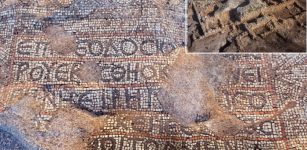 2700-Year-Old Farmhouse, Byzantine Monastery With Silver Coins And Colorful Mosaics Unearthed In Rosh Ha-‘Ayin, Israel
Archaeology | Dec 31, 2015
2700-Year-Old Farmhouse, Byzantine Monastery With Silver Coins And Colorful Mosaics Unearthed In Rosh Ha-‘Ayin, Israel
Archaeology | Dec 31, 2015 -
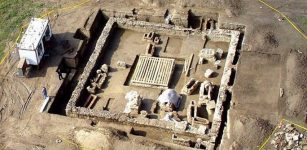 Viminacium Ancient Roman Camp: Sarcophagus With Skeletons, Rich Grave Goods Found In Serbia
Archaeology | Jun 5, 2018
Viminacium Ancient Roman Camp: Sarcophagus With Skeletons, Rich Grave Goods Found In Serbia
Archaeology | Jun 5, 2018 -
 On This Day In History: Remembering D-Day – On June 6, 1944
News | Jun 6, 2016
On This Day In History: Remembering D-Day – On June 6, 1944
News | Jun 6, 2016 -
 Ancient Mystery Of The Enigmatic ‘Cat Men’ – The Arrival – Part 1
Ancient Mysteries | Jan 17, 2021
Ancient Mystery Of The Enigmatic ‘Cat Men’ – The Arrival – Part 1
Ancient Mysteries | Jan 17, 2021 -
 Cairn de Barnenez: Europe’s Largest Megalithic Mausoleum Is One Of The World’s Oldest Man-Made Structures
Featured Stories | Nov 1, 2018
Cairn de Barnenez: Europe’s Largest Megalithic Mausoleum Is One Of The World’s Oldest Man-Made Structures
Featured Stories | Nov 1, 2018 -
 Impressive Textile Reconstruction Shows What Viking Age People Dressed Like
Featured Stories | Sep 26, 2023
Impressive Textile Reconstruction Shows What Viking Age People Dressed Like
Featured Stories | Sep 26, 2023 -
 Sir Marc Aurel Stein: Famous Fascinating Expeditions To Ancient Places Of The Silk Road
Civilizations | Feb 11, 2016
Sir Marc Aurel Stein: Famous Fascinating Expeditions To Ancient Places Of The Silk Road
Civilizations | Feb 11, 2016 -
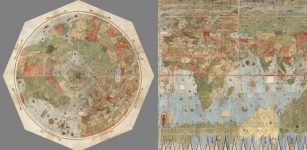 Unique Ancient Map Depicting The Earth As Seen From Space Restored Digitally
Archaeology | Dec 18, 2017
Unique Ancient Map Depicting The Earth As Seen From Space Restored Digitally
Archaeology | Dec 18, 2017 -
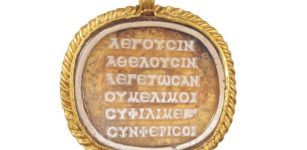 Almost Unknown Ancient Greek Text Rewrites History Of Poetry And Song
Archaeology | Sep 9, 2021
Almost Unknown Ancient Greek Text Rewrites History Of Poetry And Song
Archaeology | Sep 9, 2021 -
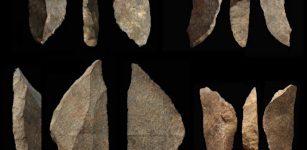 Prehistoric Swiss Army Knife Shows How Early humans Communicated
Archaeology | Jun 9, 2022
Prehistoric Swiss Army Knife Shows How Early humans Communicated
Archaeology | Jun 9, 2022 -
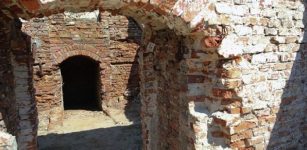 Mysterious Tunnel Found Under Saxon Palace Ruins In Warsaw, Poland
Archaeology | Sep 14, 2023
Mysterious Tunnel Found Under Saxon Palace Ruins In Warsaw, Poland
Archaeology | Sep 14, 2023 -
 Nomadic People’s 1,500-Year-Old Imperial Worship Unearthed In Hohhot, Inner Mongolia
Archaeology | Nov 18, 2020
Nomadic People’s 1,500-Year-Old Imperial Worship Unearthed In Hohhot, Inner Mongolia
Archaeology | Nov 18, 2020 -
 LIDAR Discovers Giant Ancient Mesoamerican Calendar – Structures Were Aligned To The Stars
Archaeoastronomy | Jan 10, 2023
LIDAR Discovers Giant Ancient Mesoamerican Calendar – Structures Were Aligned To The Stars
Archaeoastronomy | Jan 10, 2023 -
 Unexplained Historical Mass Disappearances – Lost Without Trace – Part 1
Featured Stories | May 31, 2019
Unexplained Historical Mass Disappearances – Lost Without Trace – Part 1
Featured Stories | May 31, 2019 -
 Why Is Roulette Called The Devil’s Game?
Ancient History Facts | Apr 3, 2018
Why Is Roulette Called The Devil’s Game?
Ancient History Facts | Apr 3, 2018 -
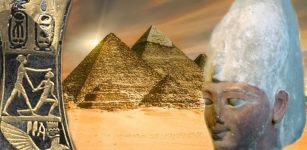 Pharaoh Ahmose I Expelled The Hyksos Invaders And Changed History Of Ancient Egypt
Featured Stories | Mar 16, 2021
Pharaoh Ahmose I Expelled The Hyksos Invaders And Changed History Of Ancient Egypt
Featured Stories | Mar 16, 2021 -
 Sybil Ludington: Courageous American Girl Who Rode For Independence
Featured Stories | Dec 19, 2020
Sybil Ludington: Courageous American Girl Who Rode For Independence
Featured Stories | Dec 19, 2020 -
 Scientific Disagreement Over The Bronze Age Tin Ingots From The Uluburun Shipwreck
Archaeology | Sep 25, 2023
Scientific Disagreement Over The Bronze Age Tin Ingots From The Uluburun Shipwreck
Archaeology | Sep 25, 2023



